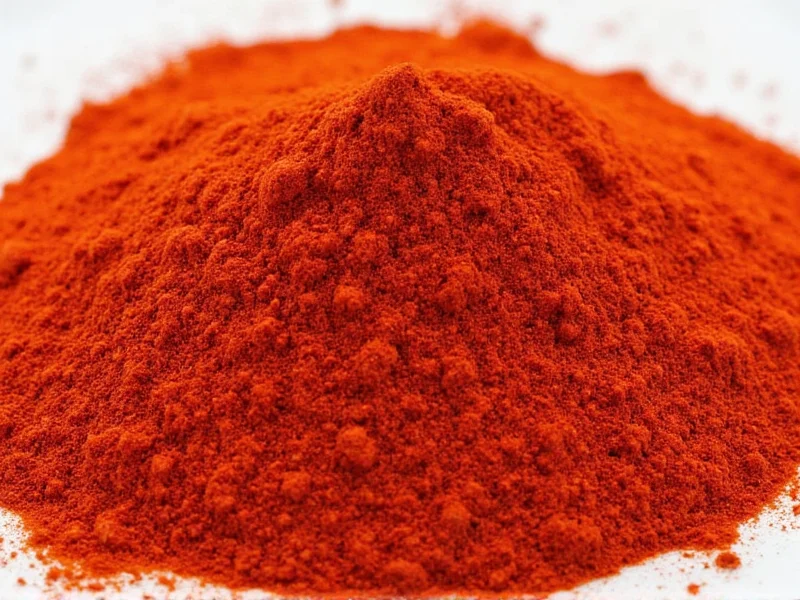When exploring the difference between Hungarian paprika and paprika, many home cooks and culinary enthusiasts encounter confusion about terminology and quality. Understanding these distinctions matters significantly for recipe authenticity and flavor development in traditional dishes.
Decoding Paprika Terminology
The term "paprika" refers broadly to ground peppers from the Capsicum annuum family. However, context determines its specific meaning:
- General paprika: Any ground pepper product worldwide
- Hungarian paprika: Specifically produced in Hungary's microclimate regions using traditional methods
- Spanish paprika (Pimentón): Distinct smoked varieties from Spain
Many consumers mistakenly believe "paprika" alone denotes a specific type, when in reality it's a category encompassing numerous regional variations. The difference between Hungarian paprika and regular paprika becomes apparent when examining production standards and flavor complexity.
Hungarian Paprika: A Protected Culinary Heritage
Hungary's unique soil composition and climate create ideal conditions for growing specific pepper varieties that develop exceptional flavor compounds. Since 2000, authentic Hungarian paprika has held Protected Geographical Indication (PGI) status under EU law, requiring:
- Peppers grown in designated Hungarian regions (Szeged or Kalocsa)
- Traditional sun-drying methods
- Stone-ground processing without additives
- Rigorous quality control standards
Hungarian producers recognize eight official paprika varieties, ranging from mild édesnövesz to fiery erős. This classification system reflects generations of agricultural expertise focused on flavor development rather than just heat measurement.
| Characteristic | Hungarian Paprika | Regular Paprika |
|---|---|---|
| Origin | Specific Hungarian regions (PGI protected) | Global sources with variable standards |
| Pepper Varieties | 8 designated Hungarian cultivars | Generic pepper types |
| Flavor Profile | Complex sweet, earthy, fruity notes | Often one-dimensional, milder flavor |
| Heat Range | 0-50,000 SHU (8 official varieties) | Typically 100-1,000 SHU (mild) |
| Color | Bright red to deep brick red | Often duller orange-red |
| Production Method | Traditional sun-drying, stone grinding | Industrial processing, possible additives |
Flavor and Culinary Impact Differences
The difference between Hungarian paprika and paprika significantly impacts cooking results. Authentic Hungarian varieties deliver nuanced flavor layers that enhance dishes beyond simple color addition:
Hungarian sweet paprika (édesnövesz) offers deep fruitiness with subtle earth notes, essential for authentic goulash and chicken paprikash. Its complex flavor develops when bloomed in oil, releasing aromatic compounds that regular paprika cannot replicate due to lower quality peppers and processing methods.
When considering can I substitute regular paprika for Hungarian paprika, understand that while possible in a pinch, the substitution alters the dish's fundamental character. Regular paprika often lacks the depth needed for traditional Hungarian recipes, resulting in flatter flavor profiles.
Quality Indicators for Authentic Hungarian Paprika
When shopping, look for these markers of genuine Hungarian paprika:
- PGI certification: "Magyar Paprika" PGI logo on packaging
- Region specification: "Szegedi" or "Kalocsai" designation
- Color intensity: Vibrant red that stains oil when cooked
- Aroma: Sweet, earthy fragrance rather than dusty smell
- Ingredient list: Contains only ground peppers (no fillers)
Properly stored Hungarian paprika maintains potency for 6-12 months in an airtight container away from light. The superior oil content in Hungarian peppers helps preserve flavor compounds longer than regular paprika.
Practical Cooking Guidance
Understanding the difference between Hungarian paprika and regular paprika helps make informed cooking decisions:
Use authentic Hungarian paprika when:
- Preparing traditional Hungarian dishes
- Seeking complex flavor development
- Creating dishes where paprika is the primary seasoning
Regular paprika may suffice when:
- Used as minor color enhancement
- Preparing dishes with many competing flavors
- Working within budget constraints
For those wondering is Hungarian paprika hotter than regular paprika, the answer depends on the specific varieties compared. Hungarian paprika ranges from completely sweet (0 SHU) to extremely hot (50,000 SHU), while most regular supermarket paprika sits at 100-1,000 SHU. The heat level depends on the specific variety, not just the origin.











 浙公网安备
33010002000092号
浙公网安备
33010002000092号 浙B2-20120091-4
浙B2-20120091-4